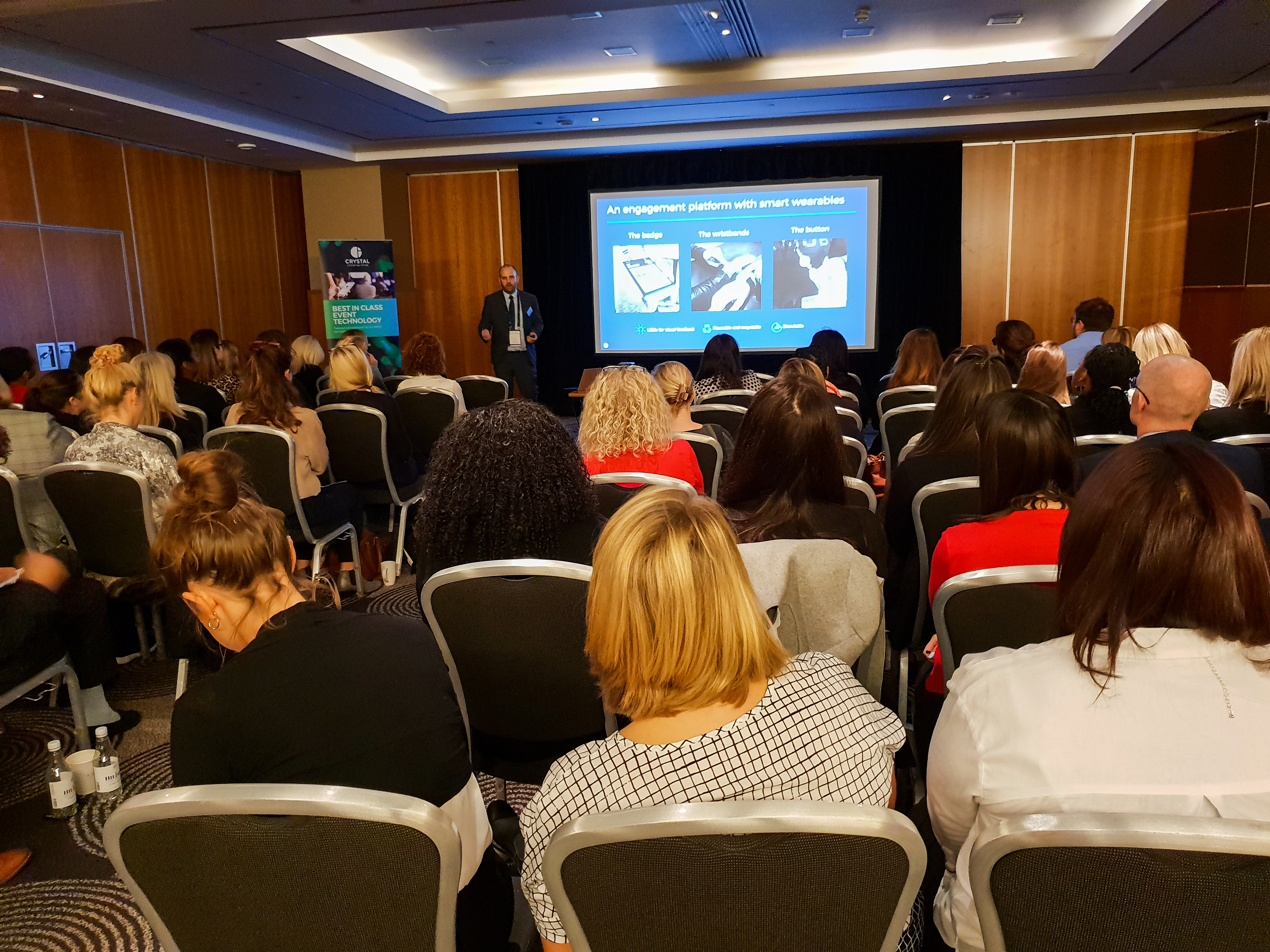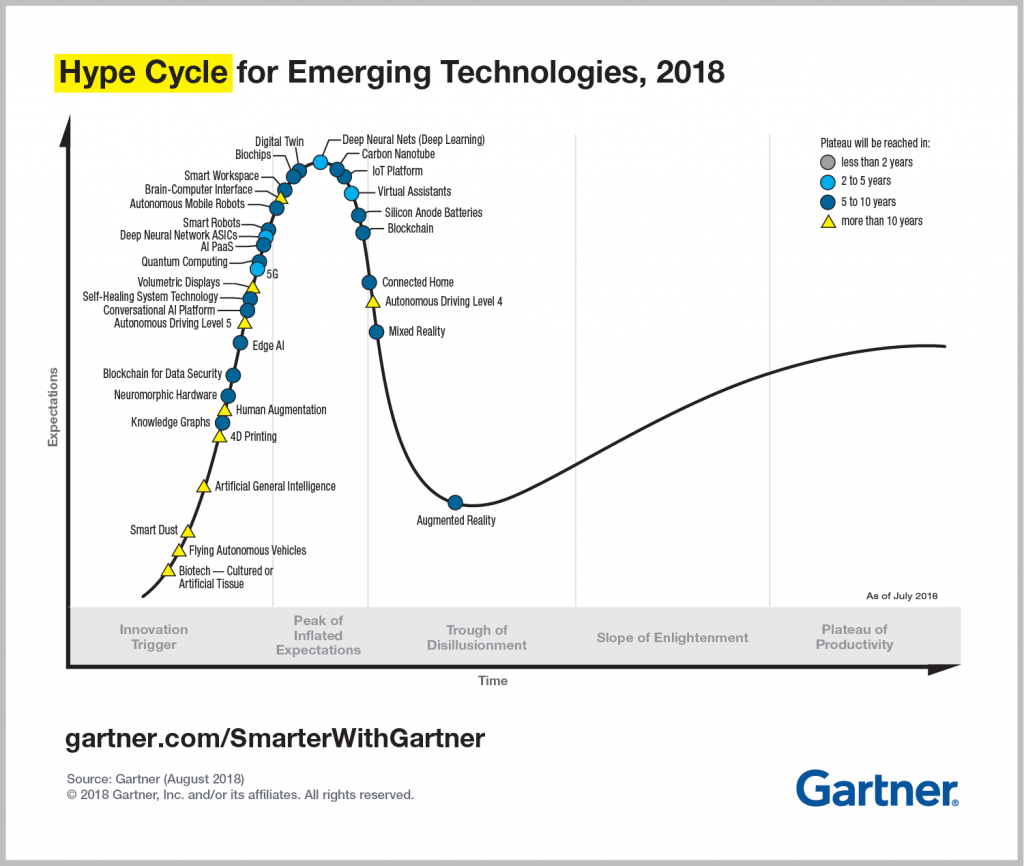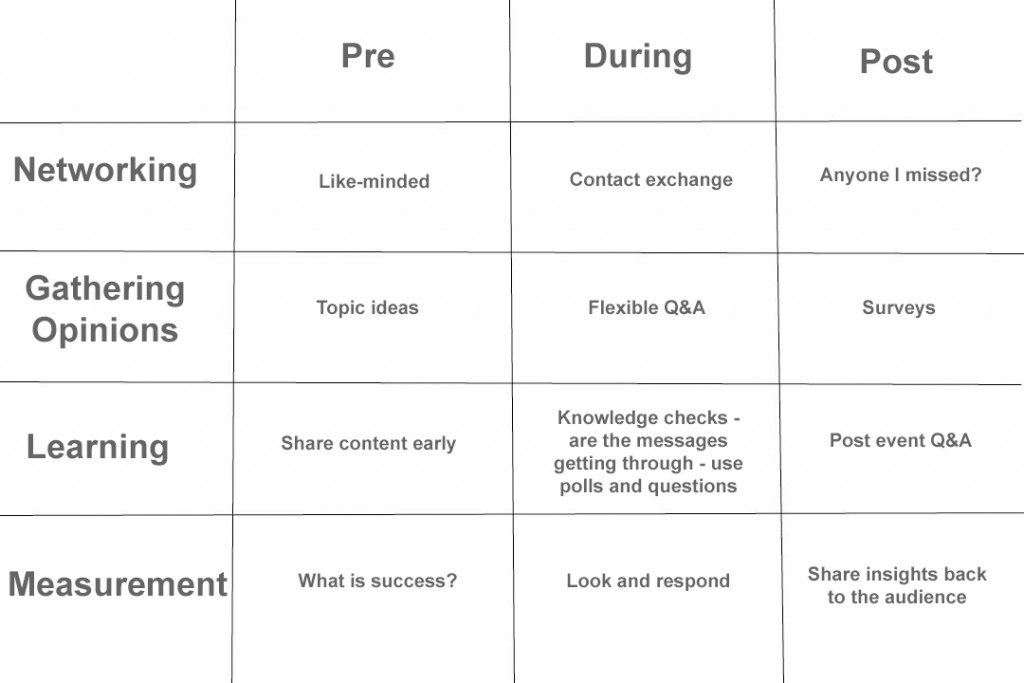Crystal Interactive’s head of innovation Rob Curtis, spoke at the Event Organisers Summit at Sofitel London Heathrow this morning, where he looked at the old, current and future of event technology, making the audience consider what has been, where we are now and what the future event tech could be.
To start with, Curtis asked the audience to think about what piece of technology revolutionised people’s day-to-day lives, any answers were acceptable – except smartphones, as they were the obvious answer. Audience members gave answers such as smart home technology (Amazon Echo/ Google Home), apps that had made daily life more reliable (Trainline app and Waze) and the use of streaming services (Netflix, Amazon Prime Video, Now TV).
We were then talked through what makes the biggest tech trends, as successful as they are:
- Saves time/ money/ increases convenience
- Changes habits
- Financial opportunities
- Creates new connection and relationship opportunities
It was explained that the four rules above also mirror the same rules that apply to making sure the technology at an event is successfully being used.
The Gartner ‘Hype Cycle’ (Above), shows what emerging technologies are bordering on becoming mainstream event tech and what has started to become a more largely used reality.
The top three emerging tech for events are:
1. AI Assistants (digital concierge): The use of event ‘chat bots’ is becoming increasingly popular. The ability to provide live on demand information without the need to actually speak to someone directly. These are great for answering the general questions for events, that get repeatedly asked. A chat bot can be set up for use via apps such as Facebook messenger and WhatsApp.

2. Drones: A great way to capture an event by film, provide visual message updates to a large hall and provide entertainment at an event.

3. AR – Artificial reality has become more realistic and greatly recognised for large scale events. It’s a great way to push a brand at events by getting interaction. As you can see from the two examples below, people are often amazed by what can be created. If you have a brand name or logo at an event AR spectacular, you are sure to appear in photos and videos that can be shared with audiences across the world.

Other event technologies that we can see will be up and coming in the future of events are:
- Event data: This is not new information, but the way we process data from events could be. This information could potentially track people’s movement at event, engagement levels, information exchange at events.
- I-beacon: A system created by Apple years ago that allows you to set up a beacon at an event. This allows you to measure event attendee’s proximity from the beacons, measuring movement around an event space. However, this has become replaced by better systems as tech has advanced.
- Event apps: Around three years ago, every event organised had an app created. It wasn’t an overly successful option as people didn’t want to store their phones with a different app for every event they attended. For large events, a custom app may still be successful, but for small and medium scale events, you can save time and money but just creating a webpage or printer information.
The 2018 Event Technology Landscape by Cramer, allows us to see the breakdown of which companies work within which sectors of event tech.
We were then talked through the advantages of using KLIK smart wearables at events and how they can help us gain the information we need to make it a success.

The main advantages of using smart wearables at an event are to keep delegates and suppliers across their personal schedules, provide instant session feedback, live event maps and notifications.
KLIK smart wearables will also give you the chance to provide instant contact exchange, auto-pushed content and data about those that have attended sessions.
It will also allow you as an organiser to produce groups using lighting and set the mood of the room using custom lighting via LEDs on the badges.
The second half of the seminar was hosted by Caroline Perriam, senior accounts manager at Crystal Interactive.
Perriam spoke about the advantages to using Crystal Interactive at a future event and how the company can provide a bespoke service with custom event technologies to make your event a success, while providing you with the information that means you can identify areas to improve in the future.
They will also provide step-by-step help with any set up and data analysis needed from an event.
Crystal Interactive top tips in the lead up to events:
- Find out what tech you’ll need to find out engagement rates at the event.
- Adoption: what proportion of delegates access an app, how they use the app at an event.
- Fade: Looking at activity levels at an event to find out which areas suffer fade, so you can add more interaction and engagement, to prevent this from happening.
- Understanding impact: Retention – measuring how messages staying with delegates
- Preference: What do people like and dislike at an event, as well as information about what could have gone better.
Crystal Interactive are an events technology company that can provide clients with custom and bespoke information for events, to calculate attendance, interaction, movement and the application of what people have learnt/use from the event.













